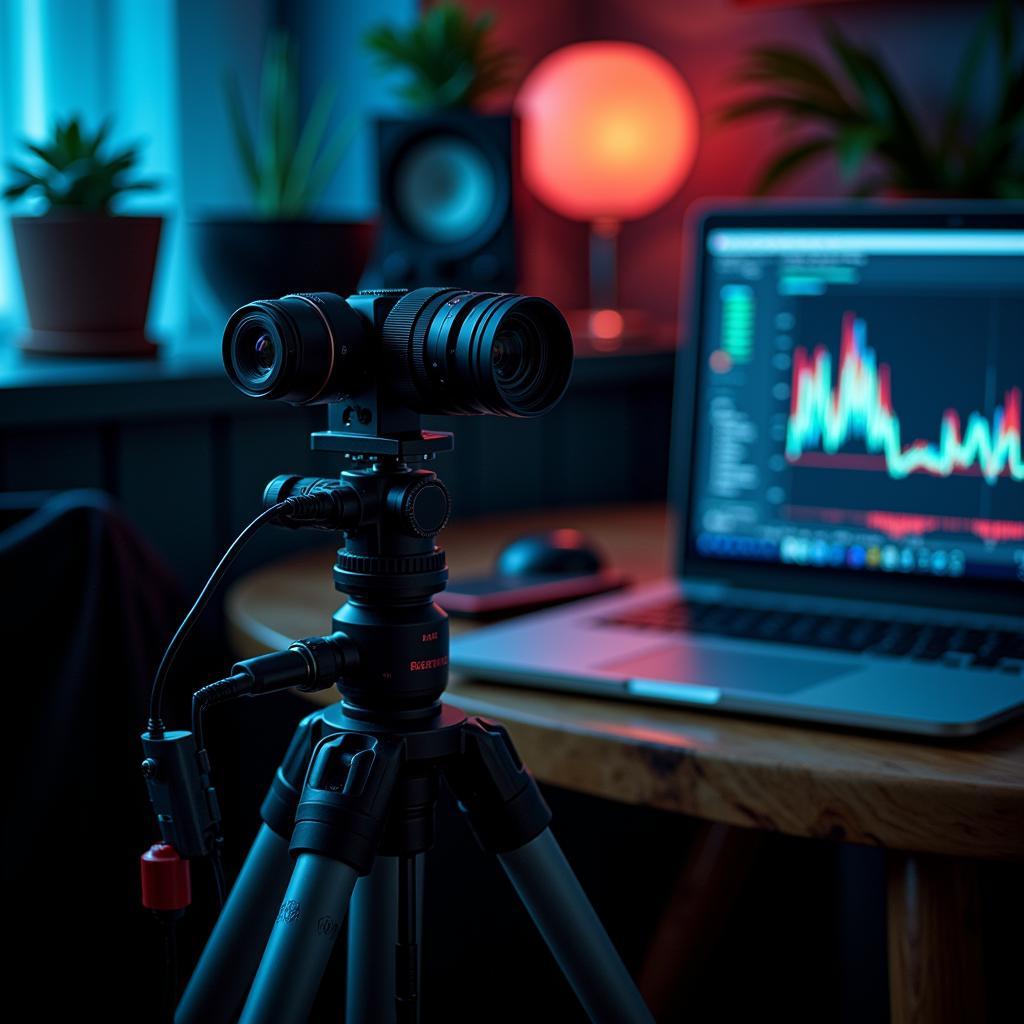The world of paranormal investigation is often shrouded in mystery, fueled by anecdotal evidence and fleeting glimpses into the unknown. However, amidst the ambiguity, researchers continually strive to bring scientific rigor to their pursuit of the paranormal. One such tool causing a stir within the community is the Research Beacon Stereoscopic Lens. This innovative technology is changing how we approach paranormal investigation, promising clearer insights and more reliable data than ever before.
What is a Research Beacon Stereoscopic Lens?
In essence, a research beacon stereoscopic lens is a specialized camera system designed to capture three-dimensional images of paranormal phenomena. Unlike traditional cameras that record a flat, two-dimensional image, this lens utilizes two slightly offset lenses, mimicking the way human eyes perceive depth. This dual-lens system allows researchers to capture images with realistic depth perception, providing a more accurate representation of the phenomena being observed.
 Research Beacon Stereoscopic Lens Setup
Research Beacon Stereoscopic Lens Setup
The Advantages of Stereoscopic Imaging in Paranormal Research
The application of stereoscopic imaging offers several significant advantages for paranormal research:
- Enhanced Depth Perception: By capturing images in three dimensions, researchers can more accurately determine the size, shape, and position of paranormal manifestations. This is particularly crucial when analyzing apparitions, orbs, or other phenomena where depth perception is vital for understanding.
- Improved Evidence Validation: The use of stereoscopic lenses can help eliminate false positives caused by dust particles, insects, or other visual artifacts often mistaken for paranormal activity in two-dimensional images. The depth information provided by these lenses allows for better differentiation between genuine anomalies and environmental factors.
- Deeper Analysis of Paranormal Activity: The ability to perceive depth opens up new avenues for analyzing paranormal phenomena. Researchers can study the movement and behavior of entities in a three-dimensional space, potentially revealing patterns and insights previously hidden in two-dimensional representations.
How Stereoscopic Lenses Work in Paranormal Investigations
During an investigation, the research beacon stereoscopic lens is typically set up in a location where paranormal activity is suspected. The lens, connected to a recording device, captures continuous images or video footage of the area. The dual lenses create two slightly different perspectives of the same scene, which are then combined using specialized software to produce a single three-dimensional image.
Real-World Applications and Case Studies
The research beacon stereoscopic lens is already making waves in the field. Renowned paranormal investigator, Dr. Emily Carter, shares her experience, “The introduction of stereoscopic imaging has been a game-changer for our research team. We’ve been able to analyze apparitional figures with a level of detail we could only dream of before. In one case, the 3D image clearly showed an entity interacting with an object in the room, confirming the claims of the witnesses.” This technology is not just limited to apparitions; it’s being used to study a range of phenomena, from mysterious orbs to unexplained fluctuations in electromagnetic fields.
The Future of Paranormal Research
The development of the research beacon stereoscopic lens marks a significant leap forward in the quest to understand the paranormal. As technology continues to advance, we can anticipate even more sophisticated tools and techniques that will further illuminate the mysteries of the unseen world.
While the research beacon stereoscopic lens provides a powerful new tool for investigation, it’s essential to remember that technology alone cannot solve the enigma of the paranormal. The interpretation of evidence still requires careful consideration, critical thinking, and a healthy dose of skepticism. However, with dedicated researchers, innovative tools, and a thirst for understanding, we move closer to unraveling the secrets that lie beyond our perception.
FAQs about Research Beacon Stereoscopic Lenses
1. Are research beacon stereoscopic lenses expensive?
The cost can vary depending on the brand and features. However, they are becoming increasingly affordable as the technology becomes more widely available.
2. Do I need special software to view the 3D images?
Yes, you typically need software that can process and display stereoscopic images. Many cameras come with their own software, or you can find compatible options online.
3. Can I use a research beacon stereoscopic lens for purposes other than paranormal investigation?
While primarily designed for paranormal research, the technology can also be used in other fields requiring 3D imaging, such as wildlife photography or scientific research.
Need Help with Your Paranormal Investigation?
Our team of experienced Paranormal Researchers is ready to assist you. Contact us 24/7:
Phone: 0904826292
Email: research@gmail.com
Address: No. 31, Alley 142/7, P. Phú Viên, Bồ Đề, Long Biên, Hà Nội, Vietnam
We’re dedicated to helping you explore the unknown.